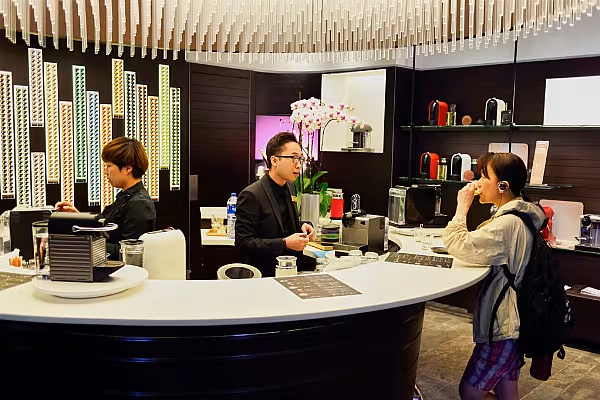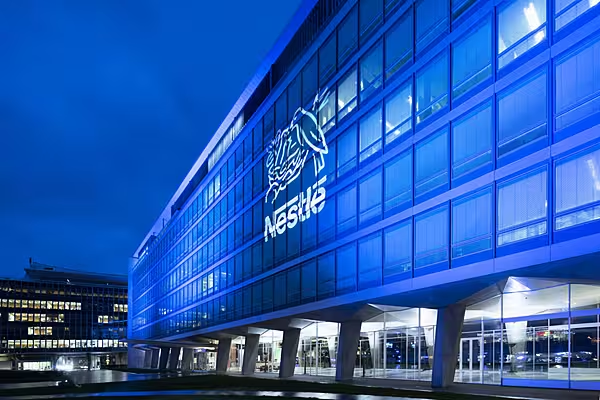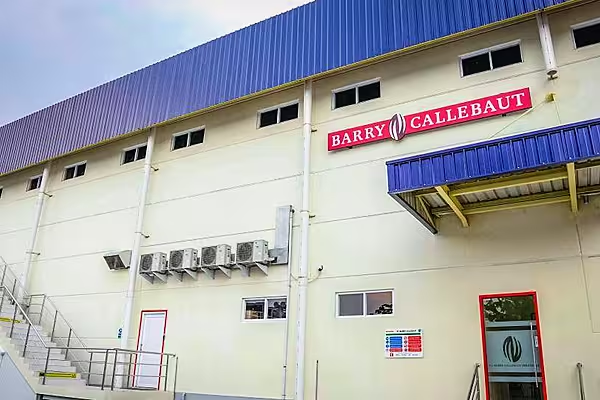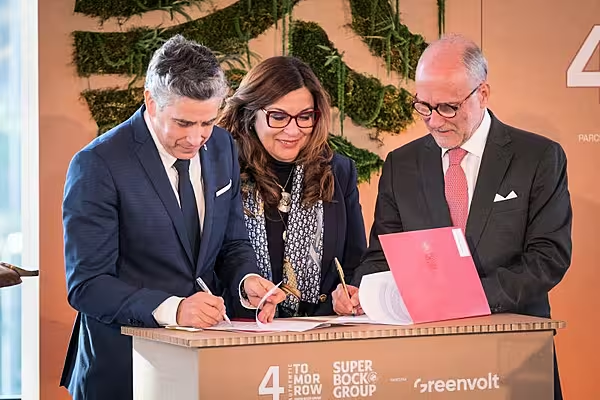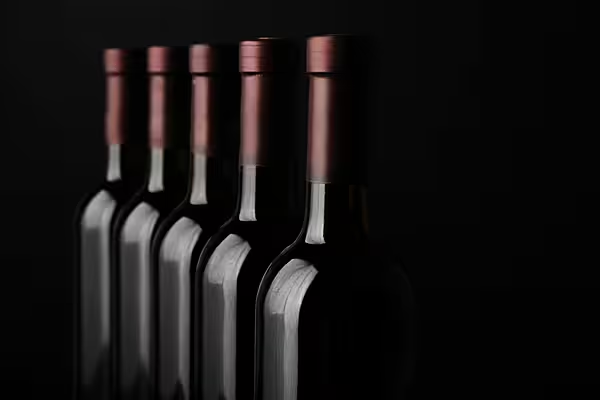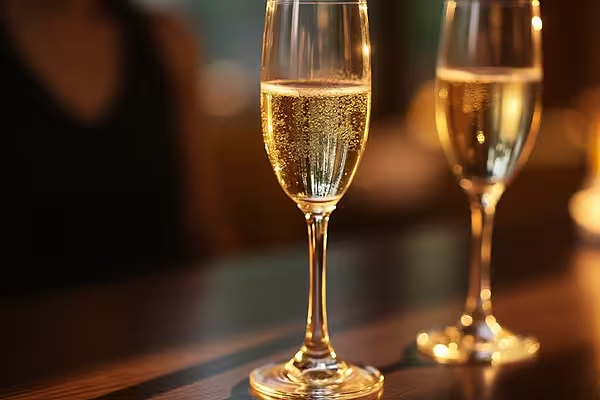Nespresso beware: Your status as Nestle’s favorite child is under threat from your scruffy kid brother. Nestle SA, creator of the high-end Nespresso brand of coffee pods and espresso machines, is increasingly leaning on a cheaper range of single-serve coffees that it calls Nescafe Dolce Gusto.
Since Nestle launched Nespresso three decades ago, the brand has become one of the Swiss company’s most profitable products. In recent years, though, Nespresso has faded as rivals have eaten into the market and upstarts sell less-expensive pods that fit Nestle’s machines -- likely making the brand a top priority for Ulf Mark Schneider, who will take over as Nestle’s chief executive officer at yearend.
Nespresso’s growth has slowed from about 30 percent annually in the last decade to 7 percent in 2015, Bank Vontobel AG estimates. Though Nestle in 2012 stopped breaking out Nespresso revenue, citing the competitive environment, analysts estimate sales were about 4.4 billion Swiss francs ($4.5 billion) last year.
Dolce Gusto was introduced in 2006 as a more accessible single-serve machine and pods. Dolce Gusto (Italian for “sweet flavor”) makes a wider range of coffee drinks and has the potential to reach more millennial consumers and penetrate emerging markets, according to Patrik Schwendimann, an analyst at Zuercher Kantonalbank. Nespresso, by contrast, emphasizes espresso and potent black coffee, and doesn’t offer pods that make milky concoctions such as cappuccinos or lattes.
“With Dolce Gusto, Nestle has cemented its lead in coffee and can hit every taste, every budget and every age group,” Schwendimann said.
Nestle last year opened its first Dolce Gusto factory outside Europe, in Brazil, adding it to facilities in Spain, Germany and Britain. And in Japan, the brand this year rolled out matcha green tea pods. While Nestle says it takes only the top 2 percent of coffee beans for Nespresso, Dolce Gusto pods are filled with lower quality blends, and some milky varieties such as Cafe au Lait and Cortado use instant coffee.
The shift comes as Nestle faces growing competition in coffee pods, a market it created when it introduced Nespresso in 1986. Today, dozens of competitors sell capsules that claim to be compatible with Nespresso machines. Rivals such as Senseo, Starbucks Corp. and Tassimo all offer competing pod/machine combos. And in March, JAB Holding Co., the investment company of Austria’s billionaire Reimann family, bought Keurig, the most popular single-serve java system in the U.S. -- part of a $30 billion expansion of its coffee empire.
In Western Europe, Nespresso’s core market, its share fell to 25 percent from 32 percent between 2010 and 2015, according to researcher Euromonitor. Over the same period, Dolce Gusto rose to 12 percent from 8.1 percent and its sales now top 1 billion francs. Globally, Nespresso’s market share dropped to 18 percent from 30 percent during that time, while Dolce Gusto slipped to 7 percent from 7.7 percent.
Given Nespresso’s share losses, Nestle’s two-pronged approach makes sense, said Robert Waldschmidt, an analyst at Liberum Capital in London. The brands, which he says have similar profit margins of about 25 percent, are the biggest players in the global coffee-pod business. With that market likely to expand 45 percent to $19.6 billion by 2020, according to Euromonitor, Waldschmidt says Nestle will come out a winner if it can keep both brands at or near the top of the list.
“The baton is being passed,” Waldschmidt said. “Nespresso was out as the lead runner, and now Dolce Gusto as the second or third guy is coming in to take the baton and move forward.”
Nestle is far from giving up on Nespresso. In the U.S., for instance, the brand has struggled as weaker java is the norm and espresso remains something of a niche player. In 2014, Nespresso introduced a new machine for the U.S. market called the Vertuoline, which is designed to make bigger cups of coffee to appeal to American tastes. Starbucks and Keurig’s Green Mountain are the leaders in the capsule market there, each with market share of about 14 percent, dwarfing Nespresso’s 4.9 percent. To boost sales, Nestle has introduced new ads aimed at the U.S. featuring Oscar-winner George Clooney, who has been the brand’s pitchman in Europe for more than a decade.
“The U.S. is the only market in the world where Nespresso wasn’t the prime mover, so it’s a different situation,” and there’s plenty of room for both Nestle brands, said Nespresso CEO Jean-Marc Duvoisin.
One issue is price. In Europe, a cup of coffee from a Nespresso machine ranges from about 52 to 57 Swiss centimes ($0.53-$0.58) versus about 39 centimes for a Dolce Gusto capsule and 36 centimes for Tassimo’s Jacobs Medaille d’Or. Dolce Gusto will help Nestle attract buyers put off by the price of Nespresso but won’t likely cannibalize existing customers because those who already own a machine are unlikely to switch, according to Jonny Forsyth, an analyst at researcher Mintel Group.
Dolce Gusto “is for a different consumer, who doesn’t love coffee but likes and wants coffee and is a lot more price sensitive,” Forsyth said. “It’s a way to get more people into the market.”
News by Bloomberg, edited by ESM. To subscribe to ESM: The European Supermarket Magazine, click here.
